 |
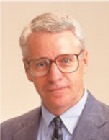 |
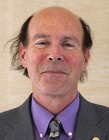 |
 |
Professor |
Professor |
Professor |
Associate Professor |
 |
 |
 |
 |
Associate Professor |
Assistant Professor |
Assistant Professor |
Assistant Professor |
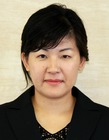 |
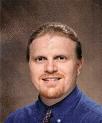 |
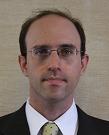 |
|
Assistant Professor |
Assistant Professor |
Assistant Professor |
|
The Center for Language Research (CLR), in the School of Computer Science and Engineering, was established in 1993 to contribute to the development of professionals in computer science, computer engineering, and related fields through the research and teaching of successful language use in academic and workplace contexts Ein particular, the use of English for academic and professional purposes. Faculty research focuses on language theory, use, pedagogy, and acquisition as well as on supporting educational technologies. Grounded in this research, CLR faculty provide innovative English language training to University of Aizu students at the graduate and undergraduate levels, as well as to university students and faculty at other universities around the world via keynote speeches, conference presentations, training seminars, and workshops. Researchers interested in applying for a position in the CLR or collaborating with CLR faculty on joint projects should contact the CLR Office at clr-office@u-aizu.ac.jp. |
Refereed Journal Papers
| [kaneko-01:2009] |
E. Kaneko. A Comparison Between Holistic Scores and Learner Oral
Performance: Implications for the Development of L2 Fluency, Accuracy
and Complexity. English Language Assessment, 2:1 E2, 2009. |
| This paper investigates how improvement in accuracy, fluency and complexity
of learner speech relates to holistic scores in an oral proficiency interview, the
Standard Speaking Test (SST), and seeks to identify the stages of oral proficiency
learners go through. The SST was developed especially for precise evaluation of
oral proficiency among intermediate level learners. Transcription of the SST was
coded with tags that indicate accuracy, fluency and complexity of utterances. Significant
inter-correlations between these features and the holistic scores provided
by SST raters were obtained; ANOVAs show that the holistic scores accurately
reflect the improvement in oral performance. The results of the multiple comparison
further delineate not only the course of development but also idiosyncrasies
at a certain proficiency level, characterized here as communicative strategies that
learners adopt under a stressful condition. Overall, the research underscores the
importance in language testing as well as in the classroom of distinguishing the use
of time-saving strategies from the ability to create speech by applying linguistic
rules using a productive lexicon. |
|
| [okamoto-01:2009] |
K. Okamoto, Y. Yasumuro, E. Yamamoto, and M. Fuyuki. An ICT
Based ESP Teaching Method as Part of Content Subject Class. Journal
of Japan e-Learning Association, 2009. |
|
Despite its widespread attention at Japanese universities, there are many problems
involved in practicing ESP. In this paper, we propose an ICT-based ESP
teaching method which is to be carried out as part of a content subject class. It
is distinctive in two aspects. First, instead of developing its own teaching materials,
it uses materials available on the Internet. Second, it operates on CEAS, an
e-Learning platform which supports a link between in- and out-of-class learning,
to make collaboration possible between the content teachers and their English
language counterparts. The objectives of this method are twofold: one is to help
the students to learn the content subject, and the other is to give opportunities
for dry runs so that the students would be capable of continuing professional development,
should the need arise in the future, in both engineering and English
language learning. Two courses at the Faculty of Environmental and Urban Engineering,
Kansai University implemented this method and the positive feedback
from the students and the results of the tests have proved the validity of the
proposed method. |
|
| [t-orr-01:2009] |
K. Kanev, S. Kimura, and T. Orr. A framework for collaborative learning
in dynamic group environments. International Journal of Distance
Educational Technologies, 7(1), March 2009. |
|
TAbstract: In this article, the authors propose a framework for Computer-
Supported Collaborative Learning (CSCL) employing dynamic groups, where at
different stages students work independently, interact with each other in pairs,
and conduct joint work in larger groups with varying numbers of participants.
A Dynamic Group Environment for Collaborative Learning (DGE/CL) supports
students in making informed and intelligent choices about how, when, and with
whom to collaborate. This is a face-to-face collaborative environment, where all
students are in the same room, can move freely around and interact with each
other while using digitally enhanced printed materials with direct point-and-click
functionality. Flexible and efficient support for dynamic group management is ensured
through the adopted Cluster Pattern Interface (CLUSPI) technology, which,
while preserving the original touch-and-feel of printed educational materials, supports
additional affordances and allows employment of new, non-traditional paperbased
interactions. |
|
| [t-orr-02:2009] |
T. Orr. Introduction to the special section: Assessment in professional
communication. IEEE Transactions on Professional Communication,
53(1), March 2010. |
|
Abstract: This article is the special section editorial on assessment in professional
communication that I edited for this journal as Guest Editor. The assessment of
engineering products and services is central to the work of engineering, but the
evaluation of human communication and its development in engineering and other
technical professions has not yet received enough attention in IEEE research and
publications. This special section begins to remedy this situation by calling for
more research in the assessment of professional communication skills and training
programs as well as in the development of better assessment tools and procedures.
It also features four new articles on the topic in the hope that these will inspire
even more research related to the assessment of human communication in scientific
and technical professions. |
|
| [wilson-01:2009] |
F. Campbell, B. Gick, I. Wilson, and E. Vatikiotis-Bateson. Spatial and
temporal properties of gestures in North American English /r/. Language
and Speech, 53(1):49 E9, 2010. |
| Systematic syllable-based variation has been observed in the relative spatial and
temporal properties of supralaryngeal gestures in a number of complex segments.
Generally, more anterior gestures tend to appear at syllable peripheries while less
anterior gestures occur closer to syllable peaks. Because previous studies compared
only two gestures, it is not clear how to characterize the gestures, nor
whether timing offsets are categorical or gradient. North American English /r/
is an unusually complex segment, having three supralaryngeal constrictions, but
technological limitations have hindered simultaneous study of all three. A novel
combination of M-mode ultrasound and optical tracking was used to measure
gestural relations in productions of /r/ by nine speakers of Canadian English.
Results show a front-to-back timing pattern in syllable-initial position: Lip then
tongue blade (TB), then tongue root (TR). In syllable-final position TR and Lip
are followed by TB. There was also a reduction in magnitude affecting Lip and
TB gestures in syllable-final position and TR in syllable-initial position. These
findings are not wholly consistent with any theory advanced thus far to explain
syllable-based allophonic variation. It is proposed that the relative magnitude of
gestures is a better predictor of timing than relative anteriority or an assigned
phonological classification. |
Refereed Proceeding Papers
| [droy-01:2009] |
Debopriyo Roy. Exploring the Usability of Collaborative Interfaces and
Users EPreference in Combining Resources for Technical Document Production.
In Proceedings of the International Technology, Education and Development
Conference, Valencia, Spain, 2009. |
| An article on the design of collaborative interfaces for producing technical documents |
|
| [droy-02:2009] |
Debopriyo Roy. Designing a EFL-based Business Communication Course
in a Virtual Learning Environment: A Work in Progress. In Proceedings of
the 12th International Humans and Computers Conference, Shizuoka, Japan,
2009. |
| An article on the design of a business communication course for non-native speakers |
|
| [droy-03:2009] |
Debopriyo Roy. Designing Complex Instructional Situations. In Proceedings
of the International Journal of Arts and Sciences Conference, Bad
Hofgastein, Austria, 2009. |
| An article on the design of surgical patient education modules: Technical Communication
Perspectives |
|
| [droy-04:2009] |
Debopriyo Roy and John Brine. Intelligent Graphics and Media Richness:
Redefining Text as a Medium. In Proceedings of the International
Technology, Education and Development Conference, Valencia, Spain, 2009. |
| An article on how to define the richness of text in contexts of complex documentation |
|
| [droy-05:2009] |
Debopriyo Roy. Off-shoring Technical Writing Projects to India: Studying
the Potential in an Emerging Market. In Proceedings of the International
Journal of Arts and Sciences Conference, Bad Hofgastein, Austria, 2009. |
| An article on the off-shoring prospects of technical communication projects to India |
|
| [droy-06:2009] |
Debopriyo Roy. Designing Complex Instructional Illustrations: A Case
Study with Patient Education Modules. In Proceedings of the IEEE Professional
Communication Society Japan Chapter Annual Conference, Tokyo,
Japan, 2009. |
| An article on the design of surgical instructions for complex patient education modules
(IEEE PCS) |
|
| [kaneko-02:2009] |
S. Ishikawa, Y. Nakamura, E. Kaneko, and Y. Ito. Eigo speaking test
niyoru daigakusei no eigogakuryoku no sokutei/hyoka (Assessing College
Students EEnglish Proficiency: Speaking Test Development and Its Application
to English Classes). In JACET Annual Convention, 2009. |
| This presentation illustrates the reality of English classes for oral proficiency in
Japan and suggests the use of a newly developed automatically-graded speaking
test. |
|
| [kaneko-03:2009] |
W. Rozycki E. Kaneko and T. Orr. Survey of Workplace English Needs
among Computer Science Graduates. In Proceedings of the IEEE International
Professional Communication Conference (IPCC 2009), 2009. |
| This paper reports the results of a November 2008 survey sent to 899 Japanese
college graduates of computer science and computer engineering courses regarding
their use of English in the workplace since graduating from the university. The
results, based on a 17.4 for computer specialists in the professional workplace in
Japan are the reading of manuals and instructions (for installation, etc.), and the
writing of email, faxes, and business letters. English-language speaking and listening
tasks are reported by respondents to be not as common in the workplace as
English-language writing and reading tasks. Findings suggest that academic institutions
training engineers in non-English-language environments should avoid an
institutional bias toward English for research purposes by balancing curricula between
future professional and workplace needs of the majority of graduates and the
needs of faculty for trained graduate students within the academy. |
|
| [rozycki-01:2009] |
E. Kanemoto, W. Rozycki, and T. Orr. Survey of Workplace
English Needs among Computer Science Graduates. In Proceedings
of the International Professional Communication Conference 2009,
http://ieeexplore.ieee.org/xpl/tocresult.jsp?isnumber=5208666&isYear=2009,
2009. IEEE Professional Communication Society. |
| http://ieeexplore.ieee.org/xpl/tocresult.jspisnumber=5208666&isYear=2009 |
|
| [t-orr-03:2009] |
T. Orr. Profile of a professional in English for science and engineering. In
Proceedings of the 2009 International Symposium on ESP and Its Teaching.
Sponsored by Wuhan University of Science and Technology, Fooyin University,
and Taiwan ESP Association, Publisher: Hubei People’s Press, October
2009. |
| Abstract: This paper describes what it means to be a professional in English for
Science and Engineering (ESE). The profile of an ESE professional not only serves
as a guide for English language specialists who seek to become ESE professionals,
but it also provides a guide for Schools of Science and Engineering when they search
for ESE professionals who can provide effective English language training for their
science and engineering students. |
|
| [t-orr-04:2009] |
T. Orr and D. Ma. The language and rhetoric of bibliographic citation in
the field of computing: A report of preliminary results. In Proceedings of the
2009 IEEE International Professional Communication Conference. Sponsored
by the IEEE Professional Communication Society, Publisher: IEEE
and Omnipress, July 2009. |
| Abstract: This paper describes a preliminary investigation of bibliographic citation
practices in the field of computing, based on linguistic and rhetorical analyses of
1,255 citations in 36 academic papers from four representative journals in the field:
IEEE Transactions on Software Engineering, IEEE Transactions on Dependable
and Secure Computing, IEEE Transactions on Parallel and Distributed Systems,
and the IEEE Transactions on Computers. Rhetorical functions of the citations are
identified, along with representative examples of the language that is used to achieve the rhetorical goals. The data is then discussed in light of current bibliographic citation
instruction, and recommendations are made for developing better training for
novices and nonnative speakers of English who need more specific than is normally
available. |
|
| [wilson-02:2009] |
N. Horiguchi and I. Wilson. Design of an interactive GUI for pronunciation
evaluation and training. In Proceedings of the 12th International
Conference on Humans and Computers (HC-2009), pages 225 E29, 2009. |
| Although language learners often desire to improve their pronunciation of a foreign
language, the software to help them do so is limited in scope. Most commercial
software for pronunciation evaluation and training focuses on the acoustic signal in
the evaluation and training of a learner. However, few systems, if any, give visual
feedback of the learner’s articulators (lips, tongue, jaw). In this paper, we describe
the ongoing development of a GUI that is programmed in Objective-C for Mac OS X.
Our software uses QTKit framework for video recording and playing, and some open
source libraries for audio recording, audio playing, and pitch detection. The GUI
incorporates and links together many kinds of phonetic data for the pronunciation
learner - for example, real-time frontal video of the learner, recorded frontal and
side videos of a native speaker’s face during pronunciation, an ultrasound movie of
the tongue moving in the mouth, and MRI images of the native speaker’s tongue
during the production of all the sounds in the training text. |
|
| [wilson-03:2009] |
I. Wilson, J. Fujinuma, N. Horiguchi, and K. Yamauchi. Acoustic analysis
of the English pronunciation of Japanese high school teachers and university
students. In Journal of the Acoustical Society of America, volume
126, page 2312, 2009. |
| As Japan attempts to meet the demands of the Ministry of Education by introducing
English-as-a-Foreign-Language (EFL) classes in all elementary schools, there
has been a shortage of qualified native Japanese EFL teachers. The English communicative
ability (and pronunciation, in particular) of Japanese EFL teachers varies
across educational levels, throughout Japan and even within individual prefectures.
This study presents an acoustic analysis of 77 Fukushima Prefecture junior and
senior high school Japanese EFL teachersread speech, comparing the two levels. It
also presents an analysis of 133 Japanese university students Eread speech, recorded
both before and after 14 weeks of weekly 90-minute explicit pronunciation instruction.
The reading passage was the ’Please call Stella Eparagraph from the Speech
Accent Archive http://accent.gmu.edu/. Detailed analyses of vowel formants, voice
onset time, fricative spectral peaks, and intonation were carried out using Praat
and will be presented. The data have implications for curriculum planning for both
EFL pronunciation classes and teacher training courses in Japan. |
Unrefereed Papers
| [t-orr-04:2008] |
T. Orr. Becoming a professional of global value. In Proceedings of the 2008
National Symposium on Teaching English for Business. Hsing Kuo University,
Hsing Kuo University, Tainan City, Taiwan, 2008. Commissioned keynote conference speech with extended abstract. |
Unrefereed Papers
| [kaneko-04:2009] |
E. Kaneko. Daigaku eigo jugyo niokeru syllabus (Syllabi and College
English Education). In Eigo speaking noryoku no sokutei to hyokaho no kenkyu
(A Study on Measurement and Assessment for English Oral Proficiency), 2009. |
| This report first describes the importance of syllabi in American universities and then
suggests the advantage of using them in Japanese English education. (Japanese) |
Chapters in Book
| [okamoto-02:2009] |
K. Okamoto. From a language learner to a language user: an alternative
approach to ESP teaching, page na. City University of Hong Kong,
Asia-Pacific LSP and Professional Communication Association, and The Hong
Kong Polytechnic University, 2009. |
Grants
| [wilson-04:2009] |
I. Wilson, K. Yamauchi, and E. Kaneko. FY 2009 Subsidy of the
Fukushima Prefectural Foundation for Advancement of Science and Education
(KENZAIDAN), 2009. |
Academic Activities
| [brine-01:2009] |
J. Brine, 2009. Vice-President, Pacific Association for Computer Assisted Language Learning. |
| [t-orr-05:2009] |
T. Orr, 2009 Serious English education for serious engineering schools, Keynote conference speech delivered at the IEEE Professional Communication Society, Japan Chapter, 2009 Conference (IEEE PCSJ 2009), Shibaura Institute of Technology, Tokyo, Japan. |
| [t-orr-06:2009] |
T. Orr, 2000-present. President, Professional English Research Consortium (PERC). |
| [t-orr-07:2009] |
T. Orr (IEEE PCS President), President’s column: New year for IEEE PCS, IEEE Professional Communication Society Newsletter, 54(1), January 2010. |
| [t-orr-08:2009] |
T. Orr (IEEE PCS President), President’s column: PCS think tanks, IEEE Professional Communication Society Newsletter, 54(3), March 2010. |
| [t-orr-09:2009] |
T. Orr, January 2010 - December 2011. President, IEEE Professional Communication Society. |
| [t-orr-10:2009] |
T. Orr, J. Noguchi, and T. Muller, Student Motivation: Can students truly use English for global living, working, and studying?, Invited panel presentation presented at the Japan Association for Language Teaching, College and University Educators Conference (JALT CUE 2009), Nara, Japan. |
| [t-orr-11:2009] |
T. Orr, English education for engineering schools, Invited keynote speech for a faculty development symposium at the Faculty of Engineering, Gifu University, Gifu, Japan, March 30, 2009 |
| [t-orr-12:2009] |
T. Orr, January 2008 - December 2009. Vice President, IEEE Professional Communication Society. |
| [t-orr-13:2009] |
T. Orr, January 2010 - December 2011. Member, IEEE Technical Activities Board (TAB). |
| [t-orr-14:2009] |
T. Orr, Creating bilingual professionals in spite of the obstacles, Keynote speech presented at the Japan Association for Language Teaching, College and University Educators Conference (JALT CUE 2009), Nara, Japan. |
| [t-orr-15:2009] |
T. Orr (IEEE PCS President), President’s column: Becoming more professional improves our communication as a professional, IEEE Professional Communication Society Newsletter, 54(2), February 2010. |
| [t-orr-16:2009] |
T. Orr, 2000-present. Associate Editor, IEEE Transactions on Professional Communication. |
| [wilson-05:2009] |
I. Wilson, 2008 E009. Publicity Committee, FAN E9: 19th Annual Intelligent System Symposium. |
| [wilson-06:2009] |
I. Wilson, 2009. Reviewer, Journal of Speech, Language, and Hearing Research. |
Ph.D and Others Theses
| [brine-02:2009] |
T. Hara. Graduation Thesis: Learning Ruby Programming With Moodle
LMS, February 2009. Thesis Advisor: J. Brine |
| [wilson-08:2009] |
Naoto Maekawa. Graduation Thesis: Automated Measurement of Ultrasound
Image Tongue Position Using MATLAB, University of Aizu, 2009. Thesis Advisor: I. Wilson, Referee: Prof. K. Markov |
| [wilson-09:2009] |
Isao Shigeno. Graduation Thesis: Pitch Comparison of Aizu Dialects
and Standard Japanese, University of Aizu, 2009. Thesis Advisor: I. Wilson, Referee: Prof. M. Cohen |
| [wilson-10:2009] |
Michiharu Sakamoto. Graduation Thesis: Phonological Processes and
Formant Analyses of Aizu Dialects, University of Aizu, 2009. Thesis Advisor: I. Wilson, Referee: Prof. M. Cohen |
| [wilson-11:2009] |
Naoya Horiguchi. Graduation Thesis: Design of an Interactive GUI for
Pronunciation Evaluation and Training, University of Aizu, 2009. Thesis Advisor: I. Wilson, Referee: Prof. K. Markov |
Others
| [wilson-12:2009] |
I. Wilson. (2010, January–March) Appeared weekly on Japanese national TV and NHK’s overseas TV: NHK Educational Television’s E-Month Topics in English Conversation ESpeak and Understand! Native Pronunciation Clinic E |
| [wilson-13:2009] |
I. Wilson. (2009, July–August) Was an invited Visiting Scholar at Univeristy of California (Berkeley), co-teaching an intensive course at the Summer Institute of Linguistics. 229 |
